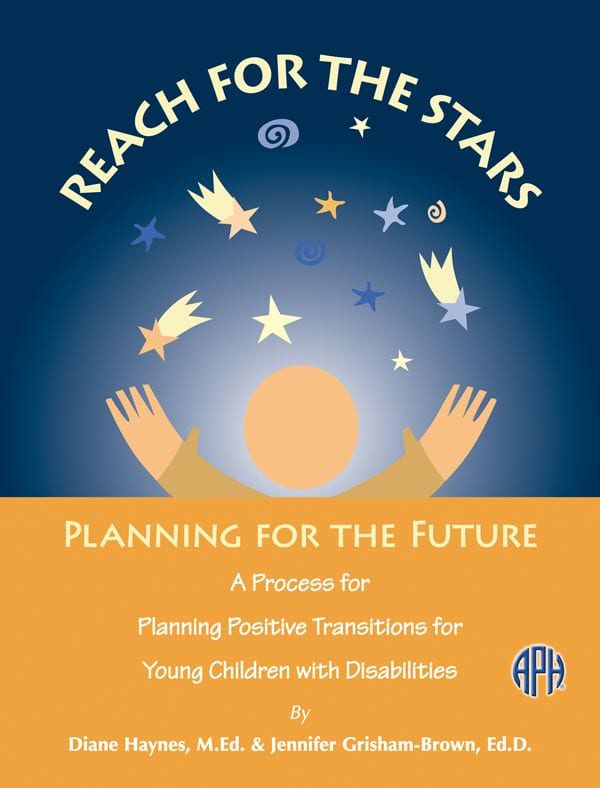Reach for the Stars, Planning for the Future, Large Print with CD-ROM
This guidebook helps families with planning positive transitions for young children with disabilities.
Note: This product has been discontinued. Orders will be fulfilled until inventory is no longer available. We apologize for the inconvenience.
$13.00
Federal Quota Eligible
78 in stock
Catalog Number: 7-08412-00
Product Description
REVISED! Reach for the Stars
This guidebook helps families with planning positive transitions for young children with disabilities.
Reach for the Stars aids families in working with school personnel to create educational plans that will lead to inclusive educational programs.
• Family members can work with teachers, community members, and their child’s peers to complete the maps and supporting materials prior to attending a transition meeting for their child.
• Service providers can use the material to understand a family’s desires and expectations regarding their child’s future.
• Information from the Reach for the Stars process can be utilized as part of the child’s functional assessment to facilitate the development of an Individualized Family Service Plan (IFSP) or an Individualized Education Plan (IEP).
Curriculum Framework
• Assessment: the process of gathering comprehensive information about children to guide educational programming decisions.
• Scope and Sequence: refers to the skills children should learn and the order in which they should learn them.
• Activities and Instruction: includes the contexts in which instruction occurs, as well as the strategies for providing instruction.
• Performance Monitoring: (progress monitoring) data on children’s performance should be collected on a regular (ongoing) basis.
Person-Centered Planning (PCP)
Person-centered planning emphasizes positive attributes of children with disabilities rather than their weaknesses. When using PCP, programs are planned around what works for a child, rather than a child’s conventional test scores. Similarly, when PCP is employed, decisions are made based on informed choice rather than what is available for a child. Finally, families are actively involved in the PCP process, particularly when used with young children.
-
Weight: 0.895 lbs
Dimensions: 9.15 × 11.2 × 1 in
Federal Quota Funds: Available
-
Contact Customer Service to discuss your warranty options.




